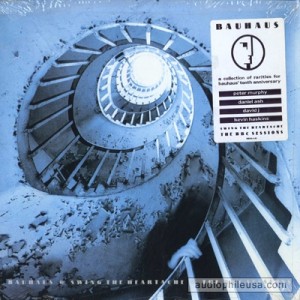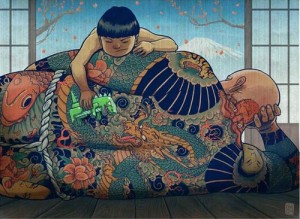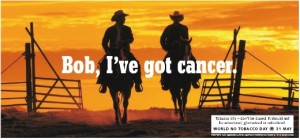Here´s a game I play in the kitchen: I rip out pictures from magazines and tape them to my cabinets.
Selected at random, their only similarity is that they’re interesting enough to look at for a while. (No ads for Xerox machines or anything like that.) The game is that you find what these pictures can have in common.
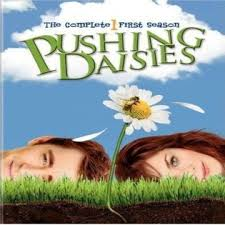 Once I ended up with a saxophone player, a train track, and an ad for the TV show, Pushing Daisies.
Once I ended up with a saxophone player, a train track, and an ad for the TV show, Pushing Daisies.
For weeks, while I was stirring soup or waiting for my pasta pot to boil, I looked up at these pictures and built bridges. Maybe the Daisies couple had pressed their ears to the ground to hear the music of the approaching train. Or, a different bridge—the bell of the saxophone was circular like the wheel of the train and the center of the daisy. Also, the saxophonist’s hair was grass-like. Or maybe he was a hobo who hopped trains searching for the brunette he once loved in the grass. Each picture contained death: the TV show about the girl who died, the abandoned train track, and the jazz of a New Orleans funeral.
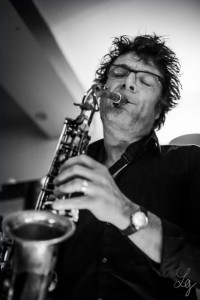 It was a simple—and surprisingly fun—way to build my metaphor muscles. And the longer those same pictures were on the cabinets, the more challenging it became to find new connections.
It was a simple—and surprisingly fun—way to build my metaphor muscles. And the longer those same pictures were on the cabinets, the more challenging it became to find new connections.
Plus, as several other writers have reported on this blog, we can all go through spells when we’re not exactly writing. In those times, this picture game can be a way to trick yourself into staying in shape.
When I tape other magazine cutouts to the chalkboard and share the game with my students, they really get into it and always create similarities I hadn’t anticipated. Poetry classes often find sensory connections: the noisy motorboat probably screams like the pregnant woman will do when she goes into labor. Or they easily do what teachers frequently hope they will—explain an abstract concept via a concrete image. The Egyptian queen from the museum photo, they say, is proud and stubborn and as unflinching as the blue mountain from the magazine cover. 
The fiction students find narratives. They link five pictures together into one story, and then I add a sixth picture, and they come up with a complete different plot or character. Maybe the desert that was the setting becomes the loneliness that motivates the main character.
If you want to give it a try yourself, here are some pictures:
Maybe the fight with cancer is like the dragon tattoo versus the Godzilla toy. Maybe that’s The Grim Reaper on the staircase. Maybe smoking makes you cough like a cat with a hairball.
Or, maybe the cat is waiting for someone to feed her, the ghostly staircase figure is floating to the dining room, the little boy wants someone to fix him an afternoon snack, and the cowboys are on their way to campfire soup. Maybe everyone is hungry and wishing the cook would pay more attention to the pot on the stove, and less attention to the pictures taped to the cabinets.
